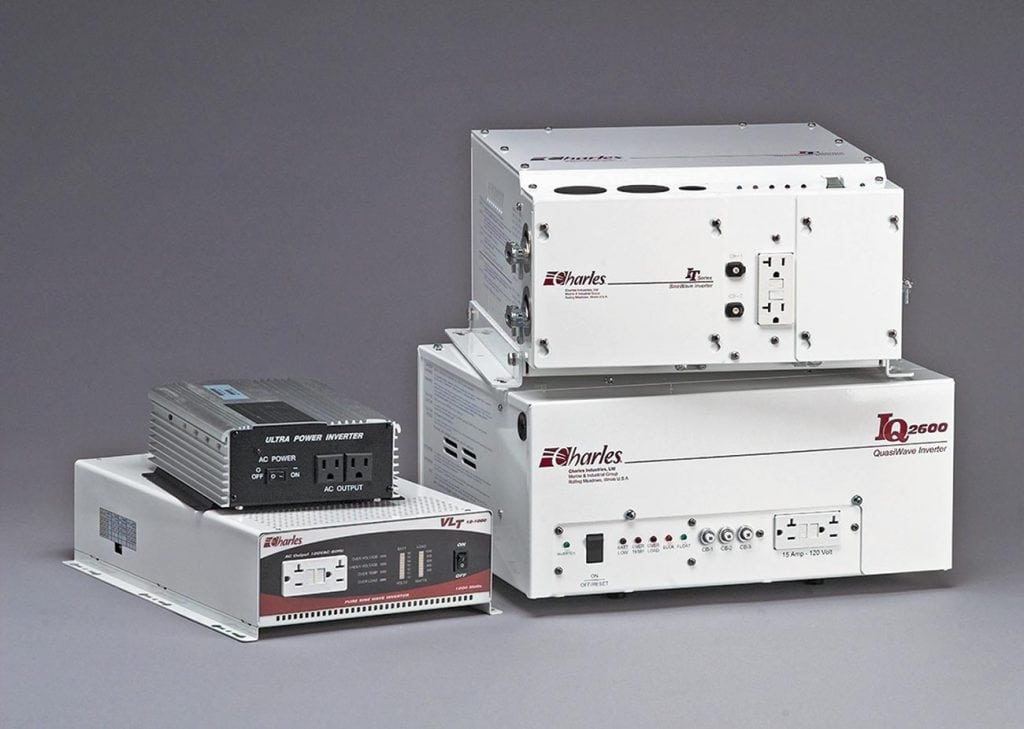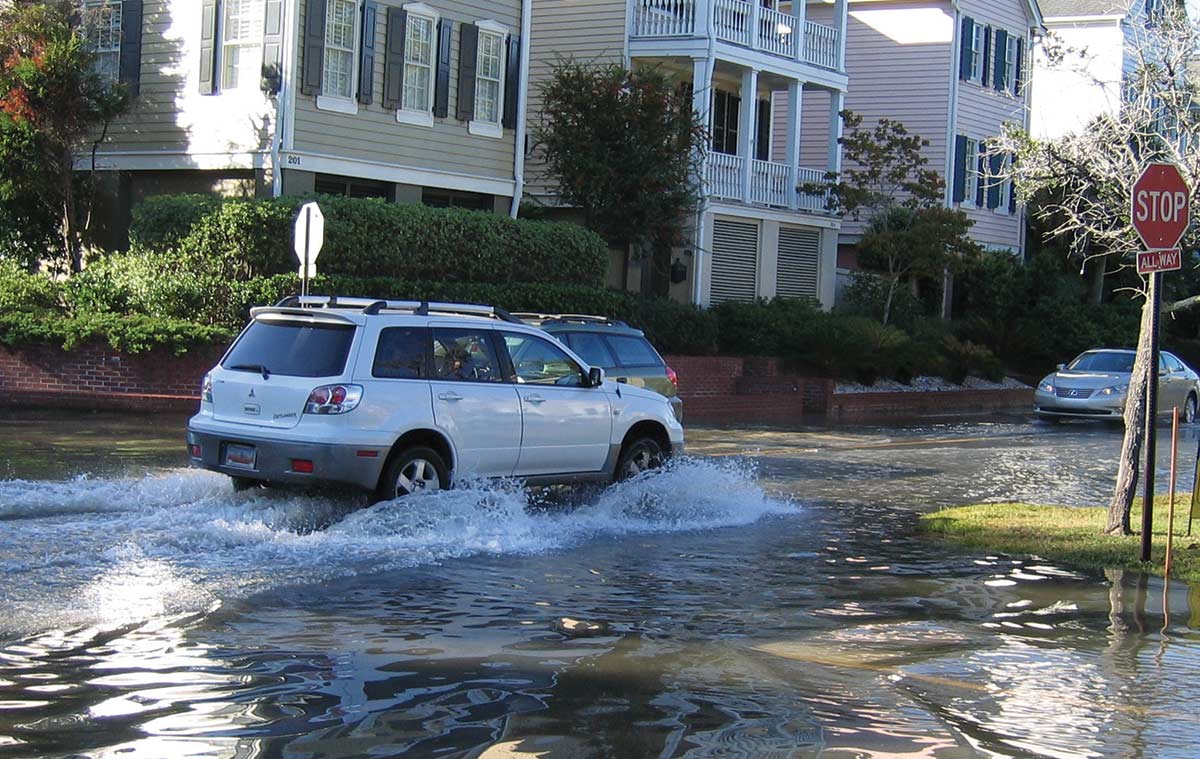Get 120-volt power on board just like at home.
If your boat is without a generator you’re stuck with 12-volt DC power like the cigarette lighter in your car—it’s fine for charging cell phones but it won’t work for a big screen TV. An inverter is the solution. Inverters take DC power from your boat’s batteries and turn it into AC power that you can use to power onboard electronics and appliances. Sensitive electronics like laptops and big screens are dependent upon the quality of the electricity used to power them. A modified sine wave output can result in poor picture and sound quality, and in rare cases cause a malfunction. An inverter such as Xantrex’s PROwatt SW offers true sine wave output, virtually free of higher frequency harmonics that often cause issues with sensitive electronics. How much electricity you want to produce and for how long depends upon how many batteries you want to carry.
Inverter technology has improved greatly over the past 20 years. In the early 1990s, a 2000-watt inverter weighed 100 pounds or more, and put out a modified sine wave form of AC current that was harsh on some electronics. While modified sine wave inverters are still offered, there are inverters now that put out a true or pure sine wave form of AC electricity that produces power like the 120-volt power outlet in your home. Pure sine wave inverters previously cost twice as much as modified sine wave inverters, but costs have come down dramatically in recent years. Today, the price difference is 10 to 20 percent more for a pure sine wave inverter, and the weight has been cut in half.
Inverters can be an efficient alternative to noisy generators that burn a lot of expensive gas or diesel. Inverters run silently, they don’t kick out any exhaust fumes and can provide up to 4.5kW of power depending on the size of the inverter and the battery bank you have on board.
To figure out how much power your battery bank will supply, simply find out the number of amp-hours the battery bank offers. Batteries serve as an energy source for 12- or 24-volt equipment as well as the DC power that the inverter uses to convert to AC power. The larger the battery bank— measured in number of amp-hours—the longer it will last.
[photomosaic ids=”5002,5003,5004″ orderby=”rand”]
A boat owner must also factor in the loads on the batteries to accurately calculate both battery power required and the number of hours the battery will supply that power. Boats normally have DC loads such as lights and pumps, as well as AC loads such as appliances, TVs and other electronics. Add up the wattage draw of all appliances and make an allowance for future additions. For example, if you come up with a total of 2000 watts and then install a 2000-watt inverter, you’re tempting fate. The 2000-watt rating is for optimum performance, and if you push that to the edge, there may be problems if the inverter runs too hot or there are surges in power draw. It’s better to go with a 3000-watt inverter to have a cushion to account for surges and spikes in the power draw. Typically, a 3000-watt inverter will operate at its peak efficiency at about 2000 watts.
Today’s inverters, such as Charles Industries’ True Sinewave Inverter/Charger and the Xantrex Freedom SW 3000-watt Inverter/Charger, operate as an inverter, battery charger, dual 30-amp pass through and neutral ground/switching. The typical scenario is when you wake up in the morning on your boat and don’t want to run the engine to make coffee or operate the microwave. The inverter provides quiet AC electricity to run appliances, drawing the DC power from the batteries. Later, when people are up and about, the engine is turned on to recharge the batteries and higher power appliances such as air conditioners.
One important specification to note is the continuous rating of the power that the inverter supplies. Charles Industries’ True Sinewave Inverter/Charger has a continuous duty rating of up to 3200 watts, while Xantrex’s Freedom SW 3000 has a continuous duty rating of 3000 watts. Two Freedom SW 3000 units may be stacked for 6000 watts of power and 300 amps of battery charging capacity with generator control, including supplementing the generator’s power with inverter power for those temporary high power load conditions.
Another inverter/charger combination unit is OutBack Power’s M-Series inverter/charger, which is modularly expandable to provide a complete power conversion solution. The M-Series incorporates a DC to AC inverter, battery charger, and an AC transfer switch, which combines 30-amp pass through and neutral/ground switching. The M-series comes in sealed and vented models, with a continuous duty rating of up to 3000 watts for the sealed version and 3600 watts for the vented.
Today’s inverters can also work with the boat’s generator if you have one, so if the power load on the boat exceeds what the generator can output, the inverter can draw power from the batteries and add additional AC power to the boat’s electrical system to handle the load.
As boat owners decide to upgrade their current boat instead of buying a new one, adding or replacing the marine generator and either adding or replacing the inverter/battery charger can greatly improve the quality of life on board at a reasonable cost.
RESOURCES:
Charles Industries charlesindustries.com;(847) 806-6300
OutBack Power; outbackpower.com; (360) 618-4305
Xantrex; xantrex.com;(800) 446-6180
By Don Minikus, Southern Boating January 2015














